The notion of ‘plantation economy’ is both common and, in some ways, obsolete, notably regarding the French colonial system and more particularly Bourbon Island.
The English word ‘plantation’ refers to what is called ‘habitation’ (estate) in French. However, due to an erroneous generalisation of the word, borrowed from the English language and applied to the French colonial empire from the 17th to the 19th centuries, it replaced the word ‘habitation’, to refer to a tropical agricultural holding which, more or less, existed throughout the period of slavery .
For Augustin Cochin, these plantations were ‘wall-less prisons, despicable places of manufacture for tobacco, coffee and sugar, at the cost of the slaves’ .
The heuristic concept of the ‘plantation economy’ was invented by economists and sociologists, ingrained in Marxism and anti-colonialism, to conceive an economy and a society which had applied a form of capitalist exploitation in a tropical colonial world during the early modern period and could only function thanks to slavery. The plantation economy was at the origin of what we call the first globalised capitalist trading system (1450-1804), which spread in the colonial world, as opposed to industrial capitalism (1750-1975), edified in western Europe, Northern America and part of Asia, countries now referred to as the ‘Global North’.
The plantation as a ‘total social reality’, in terms of property structure (a large-sized agricultural unit, generally dedicated to monoculture) and industrial structure (transformation of a product aimed at exportation toward mainland France), determined an economy that was deeply integrated into the financial sphere and depended on a system of mounting debts for producers, allowing merchants and financers to take control of the economy. This went hand in hand with a very rigid social structure – ‘the latifundium farmer at the top and the African slave beneath him’ – since, with the predominance of vast properties, came the promotion of ethnic criteria (‘racial’ criteria, as they used to say) in the slavery and post-slavery society. The plantation slave, originally brought in by the slave trade, presents all the characteristics of a proletarian and a dependant worker, with the exception of freedom and salary, since the estate-plantation is the place where the primitive proletarian structure emerged, as did all the ways of controlling it. The original capitalist working class was black and the estate/plantation was the laboratory for this great factory.
From the end of the 17th century, this system was brought into question for moral reasons, as much as for economic ones. The purpose of the planned abolition of slavery was to enable the modernisation of the colonial plantation through the acquisition of machines, as well as acquiring more productive salaried workers – the question being whether it was possible to compel them.
Generally speaking, the English word plantation originally referred to the installation of settlers in overseas territories, whatever their relations with agriculture or their way of working the land, and later became synonymous with large colonial estates. It was first applied to agricultural holdings in the Americas, the owners of which, formatted by the Protestant faith, considered their material success as a sign of God’s election, even though it necessitated the enslavement of other human beings. In the French colonial system, particularly on Bourbon island, which was in total contrast with the Anglo-Saxon world, the first settler-farmers, far from thinking they owed anything to the French mainland or to God, expressed mostly an exacerbated feeling of ownership, an asserted identity, attempting as far as possible to escape from the control and orders of the East India Company, to remain outside its nets, its ‘gobes’ (traps), as Creole people would say.
Originally, in fact, the French word ‘plantation’ only referred to the process of planting seeds or plants. In truth, the terminological duo ‘estate-plantation’ (habitation-plantation in French) is specific to the French language. In French, such a duality implies that the reality of the ‘estate’, the action of settling, living on a land far from the absolute authority – the one that at the time confined lunatics to asylums and beggars to workhouses, the one that segregated Protestants through the repeal of the edict of Nantes and slaves through the Code Noir (legal text regulating the slave trade), both texts being issued in 1685 – preceded the growing of any sort of crop to be exported to mainland France in the context of an economy conceived as outgoing. On Bourbon island – and to a lesser degree in the other French colonies – the estate was the cradle of settlement, agricultural activity and culture.
In the early years of settlement, the basic social unit was probably a temporary dwelling, corresponding to a form of predation economy, the early settlers living in light makeshift shelters like an ajoupa, a boucan or a cayenne. However, as a permanent authority was set up – first the French East India Company and later the Royal Administration (1767) – the first plots were allotted, with the obligation to clear the land and to live on it (1713, Royal Decree of Marly). From then on, in the Indian Ocean as much as in the Atlantic Ocean, the estate (‘habitation’ in French) was used to refer to a place of exchange, production and communication around Creole civilisation. This primitive ‘estate’ was a structured unit aiming at self-sustenance. First of all, there was the ‘location’, where were built the settler’s house, the outbuildings dedicated to daily life and agricultural activity: the kitchen, stockroom, argamasse (a drying platform for coffee) and the ‘godons’ (cellar), and, only in the Mascarene islands, the store and warehouses), as well as the slave huts. In the immediate proximity there was a vegetable garden/orchard used to produce food. Further away, there was the savannah grassland for grazing cattle, the woods and the wasteland. However, the division of the land radiating out towards the sea (from ‘the waves on the coast’ to the ‘peaks of the mountains’) naturally led to products being conveyed towards the seashore and reflected the fact that, turning its back to the interior of the island, the plantation asserted its bonds with mainland France. A new sort of sedentary dwelling, dedicated to agriculture, appeared on the newly cleared plots: Regnault’s ‘squared-off log cabin’, a concept that spread, between 15 and 20 of these having been built by 1672. These cabins had stone and packed earth foundations, the cabin itself was made of timber and squared-off logs, and the roof was covered with wooden shingles or palm leaves.
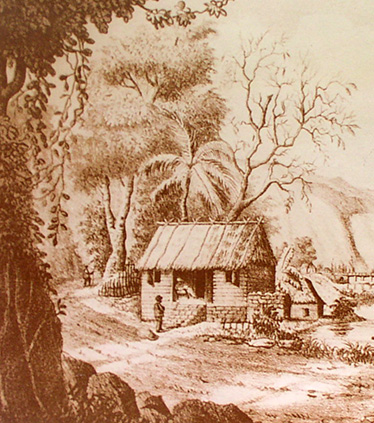
According to Antoine Boucher (1720) ‘the roof of a cabin, if it is at all large, necessitates cutting down 700 to 800 palm trees’. These wooden houses, made using local materials, were conceived by carpenters coming from various regions of France, who were also inspired by experience gained in Fort-Dauphin in Madagascar. This prefabricated construction could be dismantled by the settlers, who simply had to reassemble the wooden pieces of their cabin in the new location. In 1738, Mahé de la Bourdonnais transferred the capital from Saint-Paul to Saint-Denis, a small town with no more than 100 houses, all made of wood, except for the Governor’s house, and a few others, made of stone.
In the second decade of the 18th century, the nature of the constructions on the island changed as the French East India Company imposed coffee as a crop. The August 1735 census of the population of each of the four districts (Saint-Paul, Saint-Denis, Sainte-Suzanne and Saint-Louis) counted a total of 1,873 white people, 430 of them being land owners. Of these, 347 were actually growing crops, using 7,664 slaves, which represented 17.8 slaves for each landowner. The average surface used for agriculture was actually far smaller: 12.87 ha in Saint-Paul, 10.61 ha in Saint-Denis, 10.87 in Saint-Suzanne and 4.16 ha in Saint-Louis. 329 of those 347 inhabitants (95%) were growing coffee, generally in association with subsistence crops: we can notice the absence at this time of single-crop farming, developed a century later with the development of sugar-cane plantations.
The model instituted by the French East India Company required the progressive extension of the land-surface used for coffee and an increase in the number of slaves imported: between 1729 and 1733, almost 3,500 slaves had already been brought to Bourbon island which – like any other island – operated as a ‘slave-trap’
. 116 of the 329 coffee-growers owned over 20 slaves. In 1735, most of the coffee production was in the hands of a small number of large-scale landowners: 6% of the producers were responsible for 48% of the total supply, using an average of 58 slaves for each estate. Little by little, the coffee estates came to meet the criteria of the ‘plantation economy’: large-sized production units processed by forced unpaid workers, a protected product intended for export, with a small group of landowners working in cooperation with correspondents in mainland France. These same landowners also wielded a large amount of power and enjoyed a high social status
. The French East India Company functioned like an import-export business and a bank from which the inhabitants, landowners and coffee sellers would borrow money and buy goods imported by the Company. The local economy was governed by a logic of profit in the general structure of a capitalist trading system which was taking shape.
However, contrary to the Caribbean zone, the large estates never fully occupied the social territory of Bourbon island in a truly compelling manner. For a long period, the mountain areas (‘les hauts’) of the island remained untouched territory and their ‘virgin’ character was never far away, even creeping down to the lower parts of the island (‘les bas’) down ‘the slopes of the river-beds, where water and birdsong became one’ .” uniq=”0.4029703052112581″]
, the slopes of agricultural land interspersed with areas of primitive flora. The simple fact that Georges Sand, Leconte de Lisle, Adrien de Gaudemar and Pooka (a.k.a Alphonse Gaud) glorified the Ravine (gully) of Bernica is proof of the cracks in the ‘ubiquitous fact’ of the plantation, providing a glimpse of the archetypal untouched tropical island.

In addition, the estates of Bourbon island were characterised by the presence of a master, who maintained relations of authority over the slaves, but also relations of proximity, contrary to the American estates, which had a manager representing the master, thus creating a distance between masters and slaves.
The power and the prestige of the inhabitants enriched by coffee was symbolically represented in his home, his ‘case’ (Creole house). As the architecture of large estates developed in the 18th century, the master’s mansion was renamed ‘grand’case’ (large Creole house), or ‘main house’. The phrase ‘master’s house’, because of what it implies (master as opposed to slave) would be an anachronism and historically inaccurate.
With the development of coffee production, the mansion also grew larger and more embellished: the one owned by the poet Bertin in Sainte-Suzanne, built on stone foundations, had a shingle roof with dormer windows.
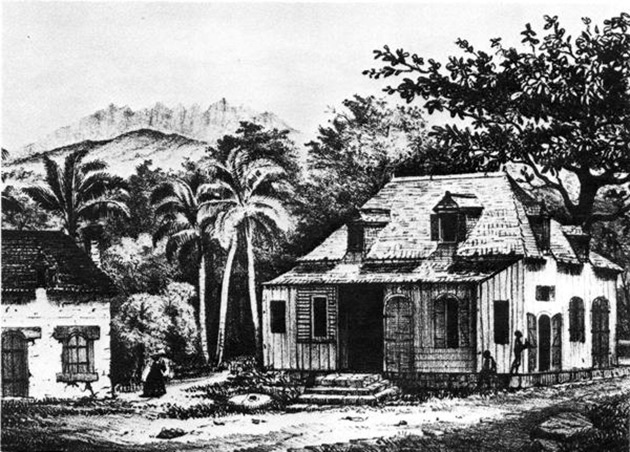
Henri Panon-Desbassayns (1732-1800), grandson of Augustin Panon (1664-1679) who settled in Bourbon island in 1689, was a good example of these wealthy landowners.
In 1761, Henri-Paulin manifested his social success through the construction of three almost identical houses not made out of timber, as was the tradition on the island, but of stone, fearing, as he did, ‘gusts of wind’. This status of ‘builder’, so much a part of the local mentality, was a connotation of the action of a man claiming a strong Creole identity – he considered himself as a ‘stranger’ in mainland France, allowing people to call him ‘African’ – yet, like the other dominant families on the island, he constructed his identity through his multiple relations, but to an even greater degree. First of all, there were the relations he had with officers of the King he had been acquainted with in India: Guy Léonard de Bellecombe, first governor of Reunion Island under Pierre Poivre, Joseph Ferdinand Anasthase de Boistel, Claude Joseph Guignard de La Biolière, Louis Alexis Grillot de Poilly, Pierre Elie François Josset de La Parenterie, Antoine de Mellis, Benoît Mottet de La Fontaine, the Baron of Saint-Mart and Thomas de Conway, officers that M. Desbassayns would meet again in Paris during his two stays there . In addition, there were the Protestant bank networks, which maintained directors at the head of the East India Company and promoted the interest of the Huguenots (French Protestants) both in the north of Europe, in India and even in China: additional proof was the relations he had with Louis Julien, his banker, ally of Jacques Rillet, who owned banks in Paris and Switzerland, or his relations with the Admyrauld family, very involved in the colonial trade, notably the slave trade. As he travelled in the French provinces, he expanded the frontiers of Louis Julien’s connections in France through encounters with Lacombe, the correspondent in Revel – a key centre of Huguenot interests – and with Lys and Johnston, Protestant bankers in Bordeaux, to whom he brought bills of exchange, thus officialising the expansion of the economic connections between Bourbon island and colonial trade in Geneva, London and Genoa, as well as with maritime marketplaces through connections with Paris. Finally, he also had connections with the Freemasons, a reflection of the maturing social and political identity of Masonic lodges which professed a cosmopolitanism centred around invitations between traders, landowners, family members and administrators, but preventing any freed coloured persons from being invited to enter the temple. Even though there is no trace of Henry Panon as a member of the lodges of Reunion island or Mauritius, he claimed to have achieved a certain rank within the Scottish ‘Rosicrucian’ freemasons on 26th July 1792, after being granted the rank of Officer of the Grand Orient of France on 23rd August of the same year.
These links were also reflected in the social relations developed locally around the direct kinships of Henry Panon: the Varnier de La Gironde family, the Grayell family, de Lanux, Leger, de La Selle, de la Biolière, Routier du Grandval and Delauney, all originating from Mauritius and Bourbon island and nurturing a family solidarity which did not exclude promoting actions of common interest. Thus, the extent and efficiency of the power exercised by the soldier become landowner can be explained through his powerful and extensive connections. In no way did these stem from his being an isolated landowner: the land only played a secondary role in this prosperity, and the connection with slavery was far from being the determining element. This collusion of financial, denominational, cultural and fraternal interests, notably linked to the French East India Company, paradoxically also gave birth to his claim of a Creole identity. At the end of the 18th century, this Indian Ocean white elite had acquired sufficient maturity to embrace power and had the desire to assume a political destiny. Could the French Revolution and its colonial Assemblies provide the keys to the emancipation of a community smothered by colonial absolutism?
Coffee growing had its ups and downs: selling difficulties, competition from the Caribbean, falling prices, debts and/or bankruptcy of certain members of the population. Around 1775, only 2.5% of the estates dedicated to coffee covered an area of over 100 ha, and even though at the beginning of the 19th century there existed a ‘caste’ of large-scale producers on Bourbon island (growing coffee, cloves and cotton: 10% of the producers owned 90% of the slaves), their economic future did not appear particularly bright.
However, they were to take advantage of the Revolution to play a political role, dominating the first and last colonial assemblies, even if their role as leaders was temporarily challenged during the Jacobean period. In actual fact, the colonial society played a major role in the shaping of the national ideology during the revolutionary period. It is true that certain producers, members of the elite of the island, had cherished the dream of independence for Bourbon island, during a lengthy saga that lasted from February 1799 to December 1800. The idea was that, by cutting the links with France, they would create new bonds with England, without becoming subjects of the kingdom. What was at stake was slavery: the Revolution had already failed to enforce abolition (1794) in the Mascarene islands (1796) and a new attempt was feared, whereas the English would guarantee to keep slavery alive, at least according to the producers, who underestimated the persistence and the influence of the British abolitionists. However, Villèle, who was, at the time, secretary under the protection of Admiral De Saint-Félix, in office in Isle de France, had worked towards abandoning the project
and the problem was actually solved when Bonaparte restored slavery in 1802.
From then on, this ‘caste’ of coffee growers systematically converted their political assets into economic assets and moved from one social environment to another, since social costs were low, the transition was easy and satisfaction immediately tangible. This caste which was now in charge of the economy continued to operate in networks, a notion that is confirmed if we study the lineage of Henri-Paulin Panon Desbassayns. His son Philippe, appointed Ordonnateur of Reunion island in 1817, before becoming ‘Inspector commissioner for the King’ in the trading posts of the French East India Company in 1818, and appointed Baron of Richemont under the ‘Bourbon Restauration’, with the support of his brother-in-law Villèle, was also editor of the Ordinance issued on 21st August 1825, increasing the influence of his family on the island by imposing the principle of an appointment for any person with any political responsibilities.
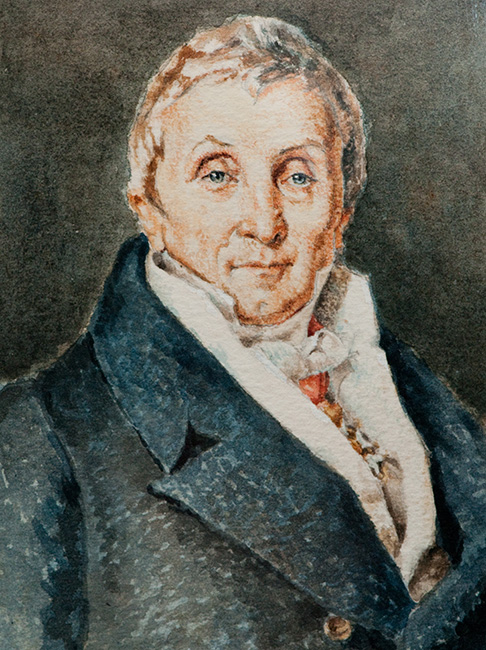
Mélanie, his daughter, married Joseph, Count of Villèle, Minister, then President of the Council under Louis XVIII and Charles X.
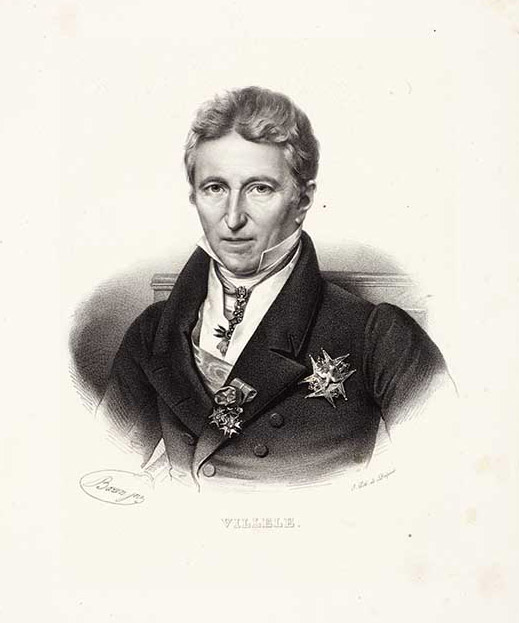
Through his influence, Eugène was appointed Ordonnateur of Pondichéry in 1824, then governor from June 1826 to 1829 .
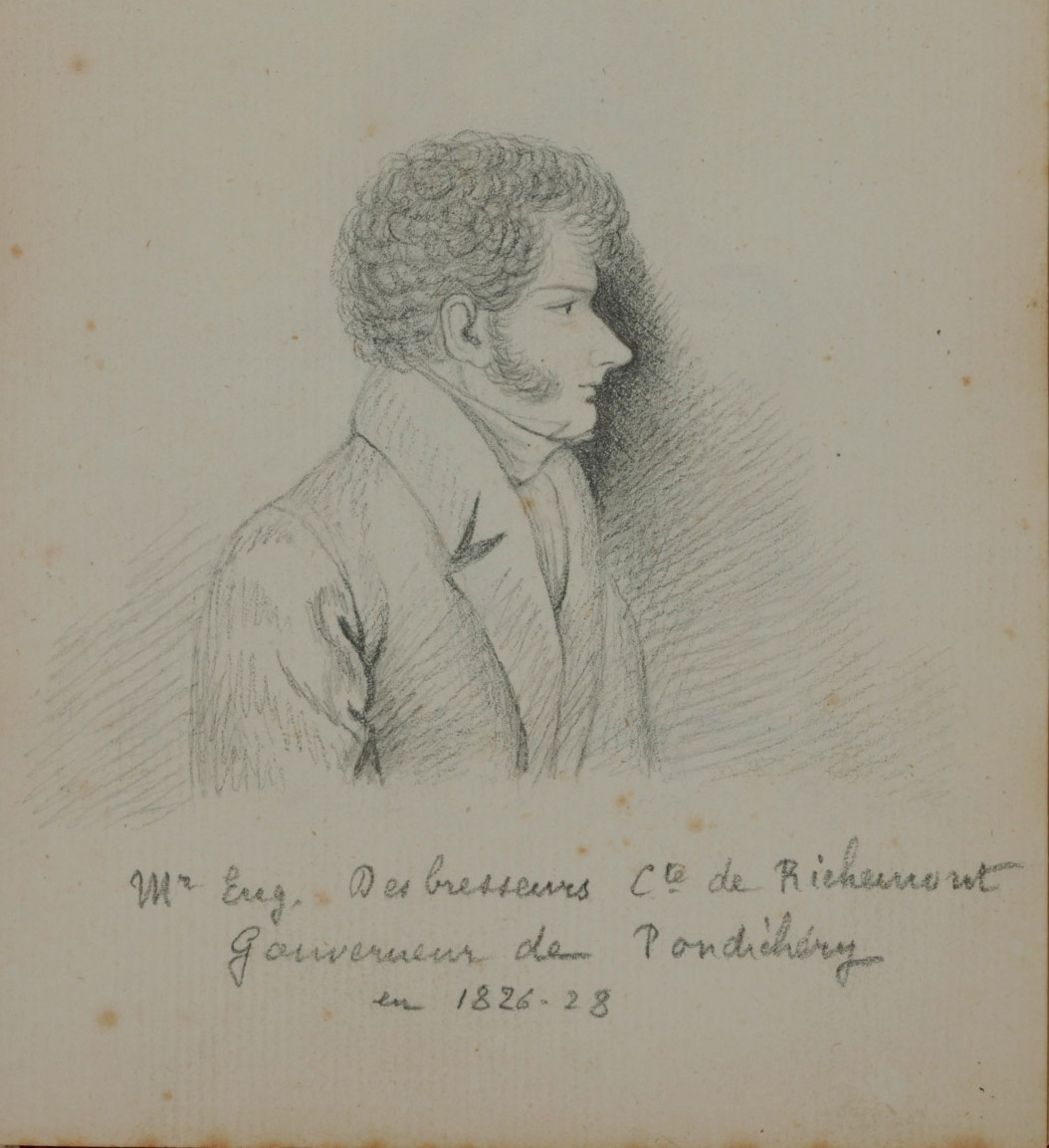
Montbrun, son of Henri-Paulin, found his way to the post of Receveur General des Finances (in charge of collecting taxes) and had links with the nobility of Bordeaux.
Among his descendants, at the very start of the 19th century, two of his sons, Charles and Joseph, took the decision to grow sugar cane and produce sugar on Bourbon island, a choice the agricultural elite of the island was soon to follow. The political disruption linked to the French Revolution modified the international economic context that the island was part of. The Desbassayns brothers seized the negative opportunities resulting from the collapse of coffee production of the island, due to the 1806 cyclones, as well as the positive opportunities created by the independence of Santo Domingo and the annexation of Mauritius. Most of the landowners of Bourbon island followed the path of the brothers and abandoned coffee, cloves, etc., to start producing sugar.
Contrary to coffee, which had been imposed by the French East India Company, the sugar economy was born from a choice made by the producers themselves, driven by a desire for profit, the more so as sugar consumption in Europe was enjoying a boom: 1kg for each inhabitant per year in 1822, rising to 2.7kg in 1840. In 1823, 4,200 ha were dedicated to sugar cane on Bourbon island, rising to 25,300 ha in 1846. To avoid losing a large proportion of its sucrose concentration, sugarcane requires heavy processing operations immediately following harvest, implying an efficient industrial structure and constant modernisation to keep up with technical progress. The choice of this new agricultural activity, which had been refused on Bourbon island in the early years following settlement, was an indication of producers broadening the scope of their economic activity, positioned themselves in commercial relations driven by export to mainland France and placed outside any administrative structure (with the exception of price regulations), in a perspective of competition with settlers in the Caribbean, who had the advantage of seniority and experience, as well as reflecting a desire to integrate the national – or even global – economic context linked to sugar. Setting up a sugar industry also implied transposing into the economic field the issued frequently raised amongst the intelligentsia of Bourbon island: questions concerning relations with the central power, the status of the ruling class and, consequently, of the territory they were developing and running.
The breach caused by the decision to set up the island’s sugar industry occurred in stages, as the models of Mauritius, the Caribbean and Santo Domingo were abandoned, creating a new model specific to Reunion island, characterised by an innovation in the sugar industry: as from 1817, Charles Desbassayns chose to use steam engines (an English engine branded ‘Fawcett’, used in le Chaudron in Saint-Denis) to work the sugar-cane mill.
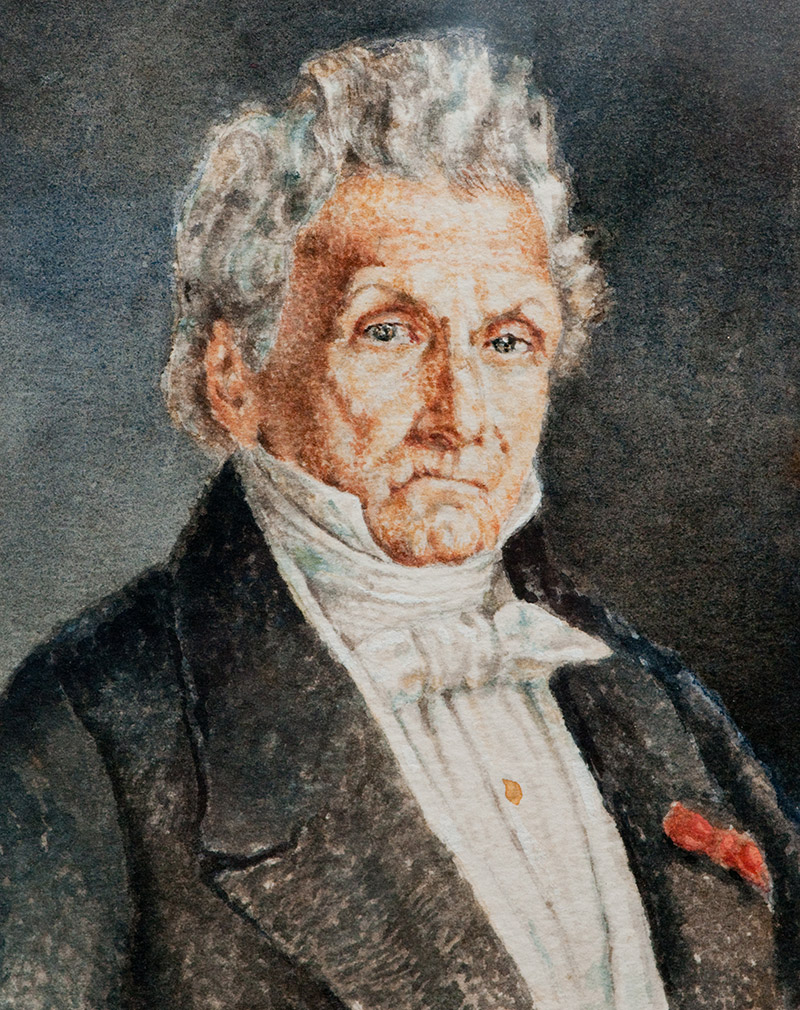
This use of innovative technology – whether local or not – continued with the invention of the ‘batterie Gimard’ (Gimard’s boiling pans) or ‘batterie coloniale’ (colonial boiling pans) invented by Wetzell
with its scum press, filters, rotators, followed by the use of turbines and vacuum pans.
For the inhabitants, used to a certain routine, producing sugar, and moreover, becoming a refinery owner, necessitated acquiring new skills, as well as acquiring a more thorough ‘knowledge of the earth’, which, up till then then, had been purely empirical and now took on a more more scientific dimension (applying weather and soil observations, the creation of a new agricultural method for sugar cane, followed by the revival of cassava as ‘the staple food of slaves’, a decision taken by Joseph Desbassayns). The new crop also involved understanding the relevant professional requirements, making innovative technical choices and developing a spirit of enterprise which, for J.-B. Say for example, identified the entrepreneur as being the main actor of progress in the society through a combination of different production factors, with ownership of capital becoming a secondary factor. The only skill that refinery owners had difficulty acquiring were management skills: some had difficulty controlling their credits, yielding to a spending and borrowing spree and losing contact with reality, the case of Abadie, de La Serve, Despeussis, Pignolet, Ms Lagourgue, and in particular Joseph Desbassayns.
The general success of Charles Desbassayns and his family clan, which created an interconnection between the technical spaces of the Indian Ocean, the Caribbean islands and Europe, led to the organisation of a truly logical and dynamic technical space on Bourbon island through the sharing of innovation with other refinery owners. The Desbassayns family generously opened their refinery to the other inhabitants, enabling them to imitate their equipment or use the latter as inspiration.
Such ‘technical sociability’ became possible thanks to the many marriage alliances that took place before the generalisation of sugar. Charles Desbassayns consolidated these alliances. To give more meaning to these marriages, they were all contracted under the regime of the community of property: “marriage is an alliance of two fathers-in-law” , and on Bourbon island, marriages between sugar-trade families were no exception to the rule. Marriage alliances were a major asset, at least at the beginning of the era when capitalistic intensity was weak, the more so as the inhabitants were perfectly skilled in detecting future sons-in-law having skills they could make use of. De Chateauvieux, who had been recruited in 1830 by the Desbassayns family (a grandson of François Nion, who was already bursar for Mme Desbassayns as from 1814), soon became Charles’ son-in-law and, as a descendant of a small-scale French aristocrat ruined by the French Revolution and who had acquired experience in the management of sugar refineries in mainland France, started a career setting up factories (particularly in Vincendo) before administrating his own estate at Colimaçons.
Socially reinforced during the entire first half of the 19th century, the refinery owners of Bourbon island naturally settled on their estates, set up in rural areas and lived surrounded by all the very demanding sugar-production tasks, with the nebulous kinship and friendship relations that composed their social and professional fashionable life. Joseph Desbassayns lived on his estate, ‘Le Grand Hazier’, just like his neighbours Sicre de Fontbrune, Lescouble, doctor Brun, Mme Dioré, Mme de Villentroy and Périchon de Sainte-Marie lived on theirs. Charles Desbassayns lived in a ‘case’ (Creole house) built on his estate in ‘Le Chaudron’ (Saint-Denis). In Basse-Terre in the town of Saint-Pierre, the Deheaulme house was built in the midst of a mango orchard, close to the refinery and was enhanced by a veranda preceded by four pools filled with the soothing waters of the Saint-Etienne canal. This choice of rural settlements reflects the fact that, contrary to the Caribbean, the refinery owners of Bourbon island were inhabitants and not absent owners.
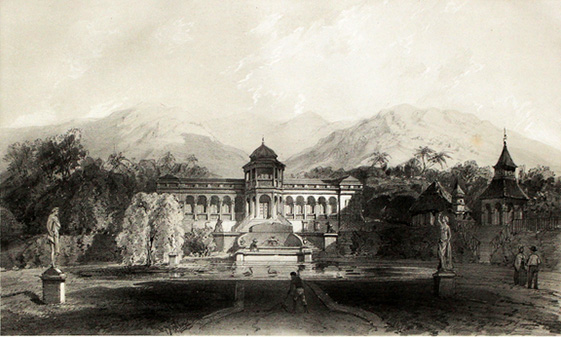
As from the 1830s, refinery owners – who had then become major actors of the ‘plantation economy’ – would often acquire a second home in town, where they often now resided. This large-scale urban migration movement mostly saw them occupying the main streets or the town centre, such as today’s ‘Rue de Paris’ or the ‘Vieux carré’ (old neighbourhood) in Saint-Denis. In a colonial society where urban development was not fundamentally necessary for the economy, the attraction of the town for sugar manufacturers was the mark of their desire to assimilate the centre of power as a place of representation, integrating competition with the traditional holders of power, in order to seize certain elements constituting the group and the society for their own benefit.
Indeed, the refinery owners were members of the town councils, with the idea that belonging to an institution was a necessity if they were to exercise power over the city, often taking an interest in the road systems and water supply. In Sainte-Marie, for example, members of the elite, such as Charles Desbassayns, Martin-Flacourt, Gérard and Advisse Desruisseaux would meet under the majorat (administration) headed by the refinery owner Hugot.
These families who sat on the town councils and the colonial council, or even worked as private councillors or delegate councillors, took on posts of responsibility in the Chamber of Agriculture and held high ranks in the militia, built up networks and set up principles that, until the island became a French department, would render impermeable the political and economic life of the colony, despite the abolition of slavery, the transitions to the Republic and universal suffrage.
Would this ‘plantation economy’ crumble after the second abolition of slavery in 1848? The end of slavery, which those who had been taking advantage of it were forced to accept, might have been perceived by some as a ‘disenchantment’ with the world, the capitalist modernity being perceived as a social equaliser, which, in the middle of the 19th century, was easily fantasized into an apocalyptic vision of a world where progress turns into moral decline. This illusion on the part of those who had lost the sugar lobby deviated the abolition of slavery from its objective, feeding the fantasy of a loss of roots, affecting one’s very identity, a notion still persisting today.
However, for the majority of the refinery owners – mainly the Desbassayns family – the passive acceptance of the 1848 abolition, in opposition to the ‘emotions’ of the past, also triggered a new political analysis. The island’s leaders abandoned the dream of independence from France that they had sometimes cherished, as has been said earlier, taking the risk of an announced ‘economic collapse’ that never occurred. The exact opposite was the case: until the mid-1860s, the colony knew unparalleled economic prosperity. The refinery owners accepted the disappearance of slavery, undoubtedly because, in a capitalist context, they measured the limited financial return, and because they wished above all to retain their links with France, the tangible reality of which they finally and completely shifted from the political to the economic. The financial compensation they demanded, an essential element of the strategy of acceptance, was the sign of this switch. This compensation was in fact the prototype of a policy of economic assistance, the posterity of which is now well-known “in Reunion island, where people are more inclined to expect a benefit rather than a right”, as declared by Jean-Benoist . Yet, abolition was part of the logic of a presupposed process of assimilation (the slave would become equal those born free), that assimilation being one of the characteristics defining the republican regime, the application of which was then implicitly accepted by the refinery owners.
The reason for the abolition of slavery was not incompatibility with the durability of sugar production and the ‘plantation economy’. Even though it was an unstable, as a society steeped in contradictions, the plantation economy was far from being a stationary structure: it managed to resist and adapt to the changes brought by the French Revolution, then to the English-style industrial liberal capitalist order, as most of the sugar manufacturers were more concerned about the organisation of production than the workers’ status. Initially, the Desbassayns family, at the origin of the refinery-estate as a deliberate choice made by the settlers, attempted to ‘maintain’ slavery after 1830 by making it more cost-effective, through setting up surveillance of slaves throughout the working day, with the aim of making the workers more productive. They no longer sought obedience but efficiency, they no longer used violence but systematic policing.
After 1848, the Desbassayns family attempted to maintain the plantation economy by adapting it to paid work. During an important debate that fragmented the Private Council on 23rd October 1848, Ruyneau de Saint-Georges, refinery owner and lawyer, stated that “emancipation had long ago been accepted by the sane majority of the population, yet they had to worry about the future pursuance of work and the maintenance of order.” He also added: “As for the question of salaries (of the former slaves), these will obviously be set very low, as the inhabitants are all more or less without any resources”. ‘Citizen Desbassayns’, the island’s iconic sugar manufacturer, played the card of tropical ‘fourierism’ (a set of economic, political, and social beliefs first espoused by French intellectual Charles Fourier in the early 19th century), by asking that the possibility of a form of association for the indentured workers should be considered: the refinery owners would supply the land, the former slaves would provide the work force and the profits would be shared. He also suggested that, in these conditions, the freed slaves would pay for their food, their clothes and dwellings, which would force them into acquiring habits of order and economy, adding: “The distinctive characteristic of the black population is carelessness and apathy.” Ruyneau objected that, on the contrary, these charges should be covered by the employer of the indentured labourers and that a part of the salary should be retained to cover “the existence of the elderly and infirm”, that he estimated to be around 15,000 in number, whereas Desbassayns estimated them to be around 2,000. Ruyneau’s proposal was voted in and indentured servitude took on the form and content of slavery.
If this ambiguous situation appeared to present the premises of a difficult survival for the plantation economy, the sugar producers-manufacturers attempted to seize control of the main mechanisms of social authority to try and shape the future . For example, they promoted Catholicism. It is true that long before abolition, planters already supported the Catholic church, yet on condition that the slaves were not involved: the evangelisation of the enslaved members of the population was delayed, as it might have put into question the established order in the name of evangelical principles. In 1845, after the Mackau laws, aimed at preparing the slaves for emancipation through Christianisation, the Church, that started a campaign of chapel construction and evangelization, as we know came up against reactionary opposition from the majority of the members of the sugar establishment – with the exception of a few sugar-cane producers such as the Desbassayns family. However, after abolition, refinery owners pushed for an evangelization of the freed slaves, with the idea that it would help to integrate them into society, thus also help to control them. For their part, the former slaves massively sought to be evangelised, as they saw this as an opportunity to become part of the social environment and they thought it would give them equality with the white population. Therefore, the refinery owners supported the action of Monseigneur Desprez, who founded the Christian Mission ‘Saint-Thomas des Indes’ in 1852, which consisted in introducing the former Indian slaves, who had all left the structures linked to sugar production two years after the abolition of slavery, to the Christian religion: in 1853 Father Joseph Gury and a number of Jesuit and Catechist priests were brought in from India. In Saint-Louis, Chabrier, a refinery owner, strongly advocated the construction of a new oversized church to welcome the freed slaves, donating bells named after his daughters when then construction was finished. The idea was to have the “freed slaves go back to the usual countryside tasks, once a more intimate religious teaching had enlightened them about their real obligations”. There is no better way to provide an adequate understanding of the links between religious acculturation and economic control!
The involvement of the refinery owners in the education system occurred exactly in the same ‘indirect’ way. As requested by Philippe Panon Desbassayns, the nuns of Cluny, under the direction of Mother Rosalie Javouhey, settled on Reunion island in 1817, first in the town of Saint-Paul, then two years later in Saint-Denis, before progressively expanding to other towns such as Saint-Pierre, where they settled in 1845 on a property of Kervéguen, a refinery owner. It is no surprise, then, to see that a member of this powerful sugar family took this initiative. The action of educating the needy, that initially excluded the slaves, was widely applied after 1848 for the former slaves welcomed by the nuns into their institutions, such as the Immaculate Conception (Immaculée Conception) in Saint-Denis. The Christian Brothers (Frères de la Doctrine Chrétienne), often with the support of the sugar manufacturers, gave primary education to the young children of freed slaves. In 1871, when Eugène Payet, mayor of Saint-Louis, remarked that the children “of the needy are wallowing in ignorance”, one of the town councillors, who also was a sugar manufacturer, proposed to create schools that would be run by the Christian Brothers in Etang-Salé, Les Avirons and La Rivière at no cost to the town council, as they would be funded by the government. In 1858, the Congregation of the Holy Spirit (Congrégation du Saint-Esprit) was entrusted, for a period of 25 years, with a public institution founded two years earlier by the governor Hubert Delisle: L’Ecole de la Providence, which included a nursing home for the elderly and infirm, a professional and agricultural school for young former slaves and also a prison for young delinquents. Charles Desbassayns, sugar manufacturer and President of the General Council, granted an annual subsidy of 80,000 Francs.
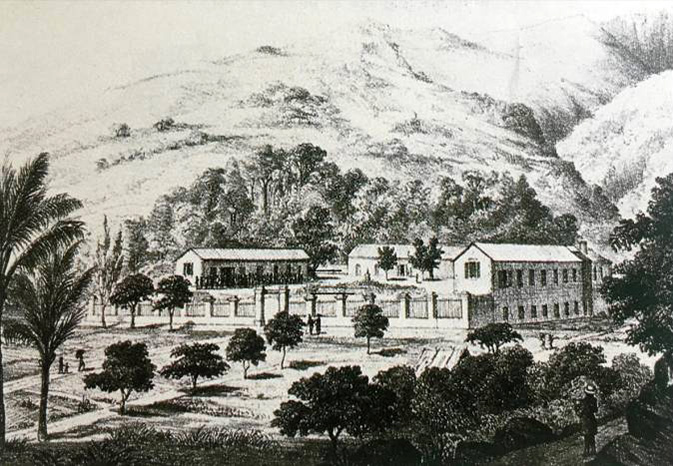
The education of the former slaves was conceived in an economic context and the children received a selective education. Jules Duval was delighted that “the sciences and arts, that are guided by feelings, such as drawing, geometry, mechanics, music and languages”, penetrated so easily the minds that “the external roughness, maintained by slavery, was thought to be resistant to teaching. However, the sugar manufacturers were then confronted with a paradox: education was in the process of taking a group of the young generation away from agriculture and manufacturing work. Some members of the press even blamed the Brothers for over-encouraging the young former slaves to think, instilling in them a subversive form of ambition! Various pressures led the governor to issue orders limiting school activity to manual work.
Long before the birth of the third French Republic and in a colonial context, the sugar manufacturers, guided by economic objectives, manipulated the religious structures and, later, republican political structures, within which schools were isolated, the purpose being to control the work-force and to perpetuate, if possible, the plantation economy. Indeed, large and medium-sized exploitations had lost a part of their liberated work force, in the months immediately following the proclamation of abolition: in 1854, a commission led by Patu de Rosemont determined that out of a total of 62,000 persons, 35,000 were outside the indentured labour system. Despite a decree issued by the ‘Prince-President’ (28th April 1852), that gave landowners the means to impose compulsory work on former slaves, the “desertion of former slaves” – a phenomenon that has now been re-estimated as concerning lower numbers – can be explained by the fact that sugar-cane producers only proposed extremely low salaries, preventing them from enjoying their newly-found liberty.
The resentment and disdain of the producers for the former slaves actually explain their marginalisation. The producers decided to seek indentured workers from outside Reunion island, to also be hired for a very low salary. After being forbidden to recruit along the African coasts, operations considered similar to those of the slave trade (slave-traders would buy the slaves from African traders and bring them back to Reunion island as indentured workers), producers turned to India for recruiting workers.
However, the purpose of indentured labour was political as much as economic: they needed to marginalise and exclude from the labour system the group of former slaves, since, through their political expression, they might be capable of contesting the plantation structure. This exclusion benefited a category of workers who did not have any capacity for political expression: the indentured workers.
However, this somewhat precarious solution to the issue of the work force did nothing to prevent a brutal and lasting deterioration of the economic situation on the island. Lacking any long-term vision, the General Council – which for a long time had been dominated by Charles Desbassayns, who had unquestionable intelligence and energy but admitted to being a legitimist – instead of supporting companies, supported every administrative council that followed, through a strong collaboration with the Bishop Desprez, and chose to fight poverty not through education, a tool of progress and social coherence, but through a collaboration with the Church and religion, seeking its help and support for the whole society – including the former slaves. This explains why the Council so readily funded the construction of a large number of chapels, churches and a new cathedral, that would never be finished, and the Catholic educational and religious structure of La Providence which, no matter what might be said, competed with structures linked to sugar. Furthermore, the tax benefits in favour of Reunionese sugar progressively disappeared, but also the accumulation of natural disasters such as several cyclones and the chilo or borer (the larva feeding on sugar cane by boring into the foot of the plant, the presence of which was recorded in Mauritius in 1850, before it infested Reunion island in 1855), stimulated the emergence of a long economic crisis. For the General Council and the Governor of the island, the death of Charles Desbassayns in 1863 almost certainly announced a decline in the influence of this lobby. Its negative effects, however, were exacerbated by the division of his political legacy between his two nephews, Frédéric and Paul de Villèle, while another nephew, Bellier de Villentroy was President of the Imperial Court and married to a member of the family of François Mottet, a notary. Without there being any institutional counterbalance, the crisis led to the ruin of the important local families, who had incurred debts financing expensive machinery intended to solve the problems related to the abolition of slavery.
Many families of the large-scale producers, who had undoubtedly anticipated the difficulties, either structural – linked to abolition of slavery or to sugar production itself – or circumstantial, for example linked to the tensions with England and the risk of a war, left the island ‘for mainland France’. We need to be clear here: the families, even Creole families, cherished a desire for mainland France, which they nurtured by imitating French habits and customs. Many Creole producers only considered sugar and the colony as a means and a place to amass a fortune they would spend in mainland France. In 1820, Auguste Billiard declared that “most of the emigrations to France are like the wind: properties very often change owners.” This desire to leave became an obsession, expressed by Betsi de Fontbrune in her writings, whose material success was not sufficient to retain her on the island. In 1837, she wrote: “More than ever, I am tormented by the desire to go to France.”
According to Jacques Weulersse, all those who stayed “really are settlers … They have abandoned tight old Europe for good.” However, they were not able to counter the evolution toward a capitalist, competitive and lucrative economy, heralding the late arrival of industrial concentration and land-ownership. One after the other, they were ruined by the Crédit Foncier Colonial (CFC), a credit company based in Paris, which demanded the payment of their debts and finally became the main industrial and agricultural structure based in the colony.
During the opening session of the General Council of 24th November 1865, Governor Dupré gave an interpretation of this economic decline: “Administratively and economically, we are in the grips of narrow and strict supervision from which, for good reasons, the colonies wish to be liberated. We cannot take the decisions essential to our prosperity, our preservation, ourselves… The remedy would be to allow us to take our own decisions on questions that, to a large extend, do not concern mainland France… The colony of Reunion island can no longer be governed without a thorough modification of its political structure. This modification must enable the population to participate in the management of public affairs through the appointment of the town councils and General Council, by means of an electoral system established on the widest possible basis.’ The revival of the question of autonomy – surprising coming from the Governor – did not prevent the demise of the ‘plantation economy’.
When exactly did the end of the plantation economy occur in Reunion island? Today, the island has seen a transition from a plantation economy centred on sugar to a consumer economy supported by public funds. On the economic, social and political levels, since the 1860s crisis, any activity outside sugar has not only filled the gaps, but has developed a true continuous economy, which has ‘made the most’ of each little sugar crisis.
It is difficult to pinpoint one single reason for the end of the plantation economy on our island, a fracture that occurred between the end of the 19th century and the 1930s. There was an accumulation of exogenous factors: the abolition of slavery, the end of the price regulations and the setting up of a form of free-trade, competition from beet sugar and an evolution of consumer habits. There were also a number of endogenous factors: capitalistic weakness of companies facing a rise in prices, including salaries and loans, as well as a separation between ‘family companies’ and those which were truly public, which could have put an end to the industry’s personal and paternalistic relations and heralded a new class structure.
When the system of indentured labour came to an end in 1883, a new form of work organisation, based on the ‘colonato’ system, a form of sharecropping set up with the aim of attracting the descendants of slaves, the Indians whose contract as indentured workers had come to an end, and mixed-race Creoles, became common on the large estates. By means of unwritten contracts, landowners found a way to prevent their land from being taken over by the poor, who settled illegally on the edges of their property. This sharecropping system mostly made it possible to reintegrate into the agricultural system the slaves that had been freed in 1848. It also enabled the bourgeoisie to exercise an influence over the disadvantaged members of the population. The descendants of slaves or indentured workers from India or Africa became part of the political clientele of the landowners, while the labourers became dependant on the landowners through refundable loans made available to them. Their moral authority went so far as to enable them to have a say in the daily lives of their workers! Set up in a paternalist context, this colonial clientelistic authoritarian culture was the final remnant of the ‘plantation economy’ .
We can wonder what happened to the people from rural areas whose livelihoods depended on the money earned from working on plantations or in sugar factories, or how land-ownership evolved when thousands of hectares of the best plantation lands were abandoned and went to waste when the small and middle-sized agricultural plots were divided up like never before.
What is sure is that the networks cemented during the first half of the 19th century determined the success and durability of the local elites, long after the decline of sugar, until the early years of departmentalisation and even after.